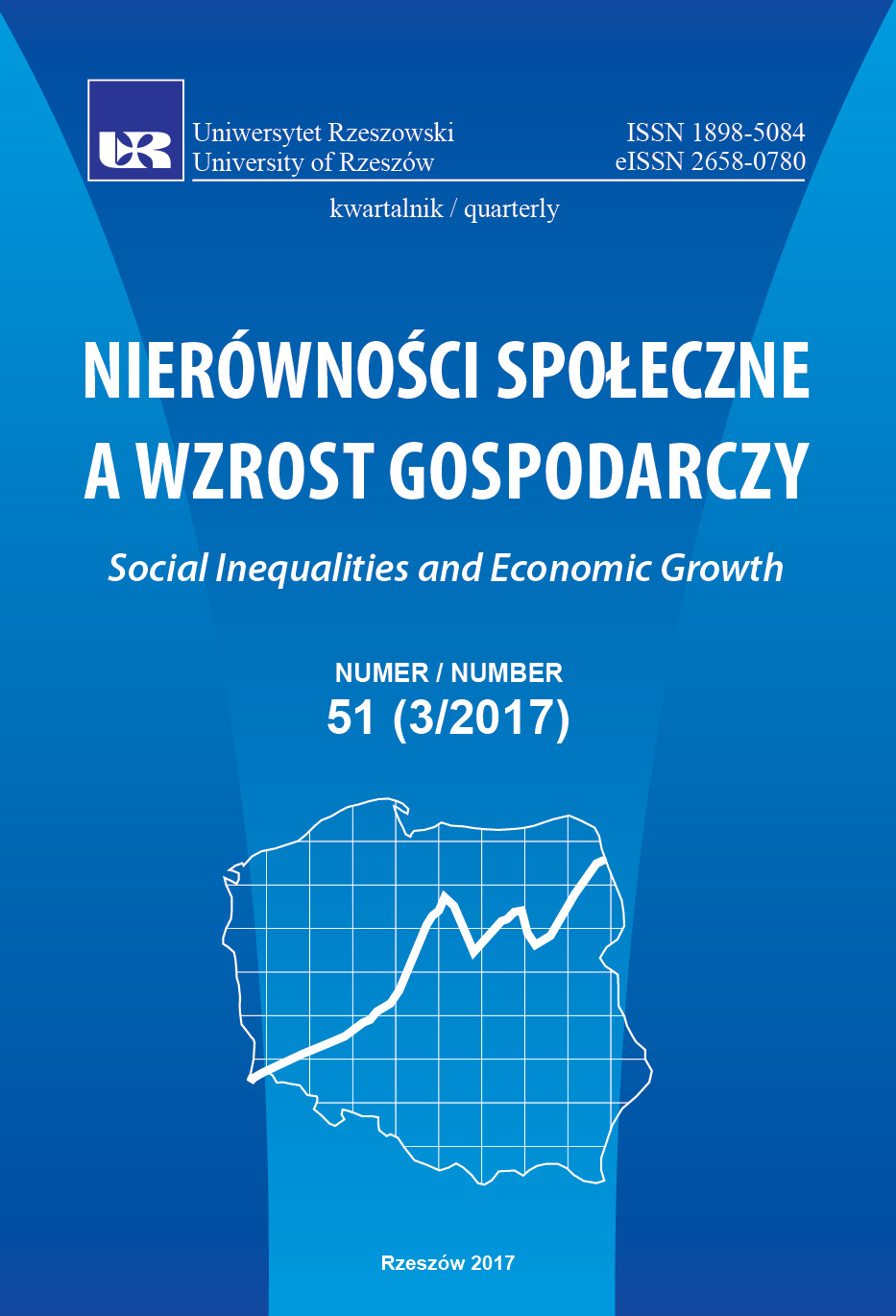Nierówności dochodowe a zadłużenie gospodarstw domowych w krajach OECD w latach 1995–2014
DOI:
https://doi.org/10.15584/nsawg.2017.3.14Słowa kluczowe:
gospodarstwa domowe, nierówności dochodowe, zadłużenieAbstrakt
Celem artykułu jest kwantyfikacja i ocena zależności występujących pomiędzy poziomem nierówności dochodowych a stopniem zadłużenia sektora gospodarstw domowych w krajach OECD w okresie 1995–2014. Dotychczasowe badania powyższego zagadnienia skoncentrowane były przede wszystkim na gospodarce Stanów Zjednoczonych i wskazywały, iż jedną z przyczyn silnego wzrostu zadłużenia amerykańskich gospodarstw domowych było pogłębianie się nierówności dochodowych w społeczeństwie. Intencją artykułu jest zatem przeanalizowanie tego zjawiska w szerszym kontekście międzynarodowym. Badania przeprowadzono w oparciu o dane udostępnione w bazie OECD Statistics z wykorzystaniem analizy korelacji parametrycznej i nieparametrycznej. Uzyskane wyniki wskazują na wyraźne zróżnicowanie siły i kierunku analizowanych zależności w badanej grupie krajów. W większości krajów anglosaskich i skandynawskich wzrostowi (spadkowi) nierówności dochodowych towarzyszył wzrost (spadek) stopnia zadłużenia gospodarstw domowych, co jest spójne z wynikami wcześniejszych badań. Jednakże w przypadku mniej zamożnych lecz najbardziej dynamicznie rozwijających się gospodarek stwierdzono zależność przeciwną. Istotne statystycznie ujemne korelacje wystąpiły również w kilku innych gospodarkach krajów rozwiniętych. Rezultaty przeprowadzonych analiz nie dają zatem podstaw do rozciągnięcia wniosków płynących z wcześniejszych badań nad tym zjawiskiem na ogół krajów rozwiniętych i wskazują, że zmiany w zakresie poziomu nierówności dochodowych w poszczególnych gospodarkach nie wpływają jednoznacznie na stopień zadłużenia gospodarstw domowych. Wydaje się zatem, że o kierunku i sile tych zależności mogą decydować specyficzne dla danego kraju czynniki ekonomiczne, społeczne, demograficzne, psychologiczne lub kulturowe.Downloads
Download data is not yet available.
Pobrania
Opublikowane
2020-11-13
Jak cytować
Bolibok, P. (2020). Nierówności dochodowe a zadłużenie gospodarstw domowych w krajach OECD w latach 1995–2014. Nierówności Społeczne a Wzrost Gospodarczy, 3(51), 167–180. https://doi.org/10.15584/nsawg.2017.3.14
Numer
Dział
Artykuły
Licencja
Prawa autorskie (c) 2017 Uniwersytet Rzeszowski

Utwór dostępny jest na licencji Creative Commons Uznanie autorstwa – Na tych samych warunkach 4.0 Miedzynarodowe.


